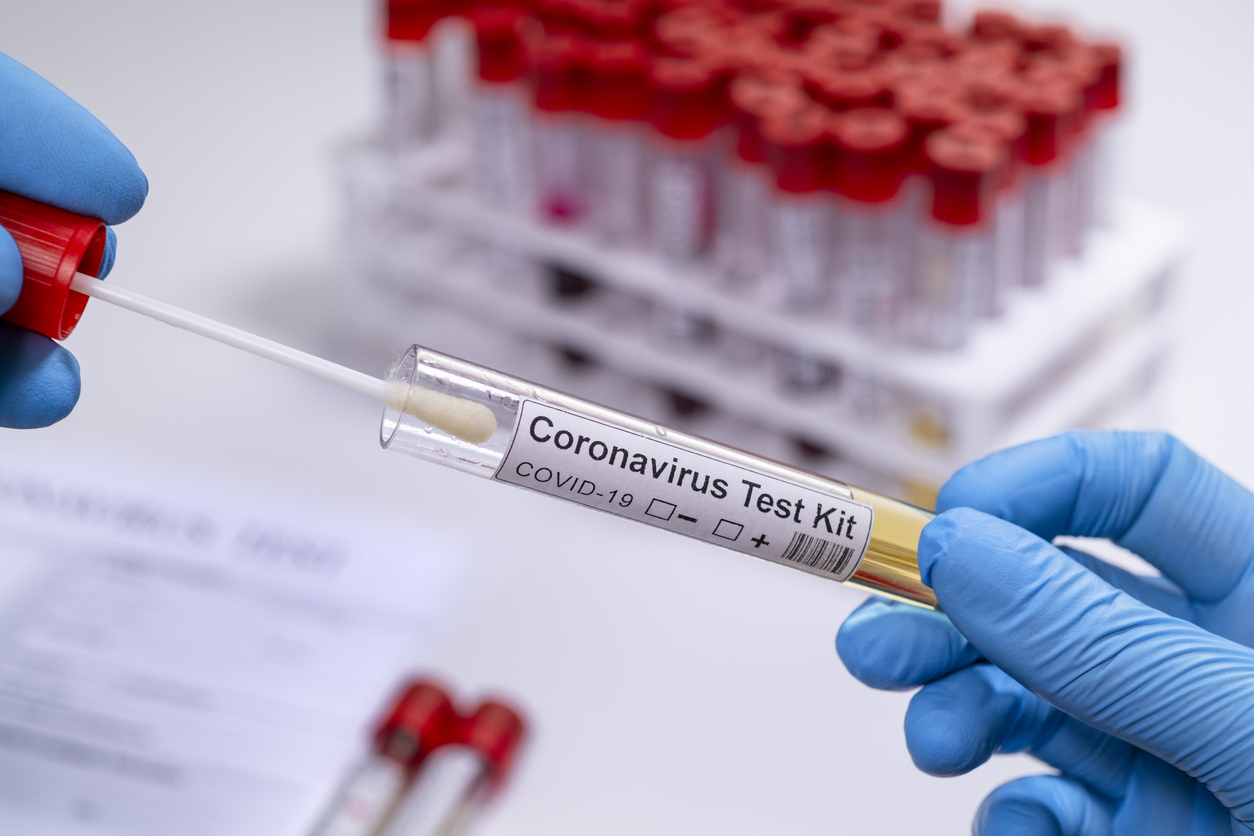
Hyderabad-based CCMB's COVID-19 testing - a 'game changer' on cards
At a time when there is a growing need to ramp up testing for COVID-19, the researchers at Hyderabad-based Centre for Cellular and Molecular Biology (CCMB) have developed a new, low-cost testing method that may as well be a game-changer.

At a time when there is a growing need to ramp up testing for COVID-19, researchers at Hyderabad-based Centre for Cellular and Molecular Biology (CCMB) have developed a new, low-cost testing method that may as well be a game-changer.
The new testing module, being claimed as a ‘breakthrough’, will help in the diagnosis and surveying the disease at a much faster rate. It can test 20,000 to 50,000 samples daily, a prospect that can significantly enhance India’s testing capacity.
At present, India is testing for COVID-19 through RT-PCR (Real Time Polymerase Chain Reaction). However, this protocol takes time and is expensive. In this method, nasal swabs are taken from a person in VTM (viral transport medium). The liquid is taken from the sample, RNA (ribonucleic acid) is extracted, and the RT-PCR test is conducted.
“The isolation of RNA makes RT-PCR test expensive and more time-consuming. The new technique devised by us will do away with that,” CCMB Director Rakesh Mishra said. This procedure would be useful in the face of the increasing need for testing across the country, he said.
How is it different?
With the steeply rising number of infected persons in the country, there is a need for a reliable test that would give quick results and also be less expensive. The new method being proposed by the CCMB researchers also uses the RT-PCR but with dry swabs, bypassing the RNA isolation stage.
In the usual method of testing, nasal swabs collected from a person are placed in a viral transport medium. From this, a part of the liquid is taken, the viral RNA is extracted and RT-PCR test is carried out. The remainder is stored. It is the step of isolating the RNA that takes time and is expensive.
RELATED NEWS: The Federal’s data-speak: Scale up COVID testing, make it an opportunity
Instead of placing the nasal swabs in the VTM, they are put in a Tris-EDTA buffer solution (widely used in cell and molecular biology for processes such as protein and nucleic acid extraction and purification), protected by ice.
“Virus in dry swabs can stay for several days at 4 degree [ice temperature]. For longer storage, it can be kept in minus 80 degree. Dry swab is much more suitable than VTM, and testing can be delayed, if necessary,” Mishra said adding that handling and transporting dry swabs is safer and more convenient.
“The test results will come in two days and at one-third the cost but with the same amount of efficiency,” the director said.
The new method allows for virologists and technicians to sequence hundreds and thousands of samples in parallel, due to the improved design of sequencing machines, which can hold multiple samples instead of just one.
Additionally, the improved machines also come with improved sensitivity and are capable of detecting the virus RNA with fewer chances of a false negative.
The project is in collaboration with Syngene, a Bengaluru-based company. The approval from the Indian Council of Medical Research (ICMR) is expected soon.
“Testing is like seeing what is around us. If you see more, you will be more informed. If you give me a choice, I will test everybody as it helps understand where to impose a lockdown or where to resume business,” the CCMB director said.
“In the course of comparing the results of both tests, researchers have found that the standard RT-PCR method can have low detection efficiency, of less than 50 percent in a real testing scenario, due to low viral representation in many samples. The new method is found to pick up even the low viral load,” Mishra said.
As of today, RT-PCR remains the final confirmatory test for COVID-19 in India. The test involves taking swabs from the nasal and oral tracts, extracting the viral RNA in a printer-like machine and amplifying it to detect SARS-CoV-2, the virus that causes COVID-19.
Working on vaccine
The CCMB, a premier CSIR institution, is also working on development of a COVID-19 vaccine. “Ideally speaking, our vaccine should be ready by the first half of next year,” the scientist said.
The CCMB has established stable virus cultures using coronavirus from patients’ samples. “This will help us in vaccine development and drug testing to fight COVID-19. We are done with a major chunk of the work as for isolating the infectious viruses from other isolates,” Mishra said.
The geneticists from the institute have successfully cultured the novel coronavirus through the samples collected from COVID-19 patients and are in a position now, to produce inactivated forms of the virus in large quantities. This will help the pharmaceutical companies test their drugs and vaccines.
RELATED NEWS: COVID test for ₹5k or PPE for ₹20k: Hospitals squeeze it out
Many government and private organisations had already approached the CCMB to test their drugs, instruments, and other anti-novel coronavirus products.
The ability to culture the virus in the lab enables CCMB to work towards vaccine development and testing of potential drugs to fight COVID-19. It also makes them a potential donor of the culture to other authorised centres that can continue growing the virus for their own use.
“Using the vero cell lines to grow the coronavirus, CCMB is now in a position to isolate and maintain viral strains from different regions. We are working towards producing viruses in large quantities that can be inactivated, and used in vaccine development and antibody production for therapeutic purposes,” the institute director said.

